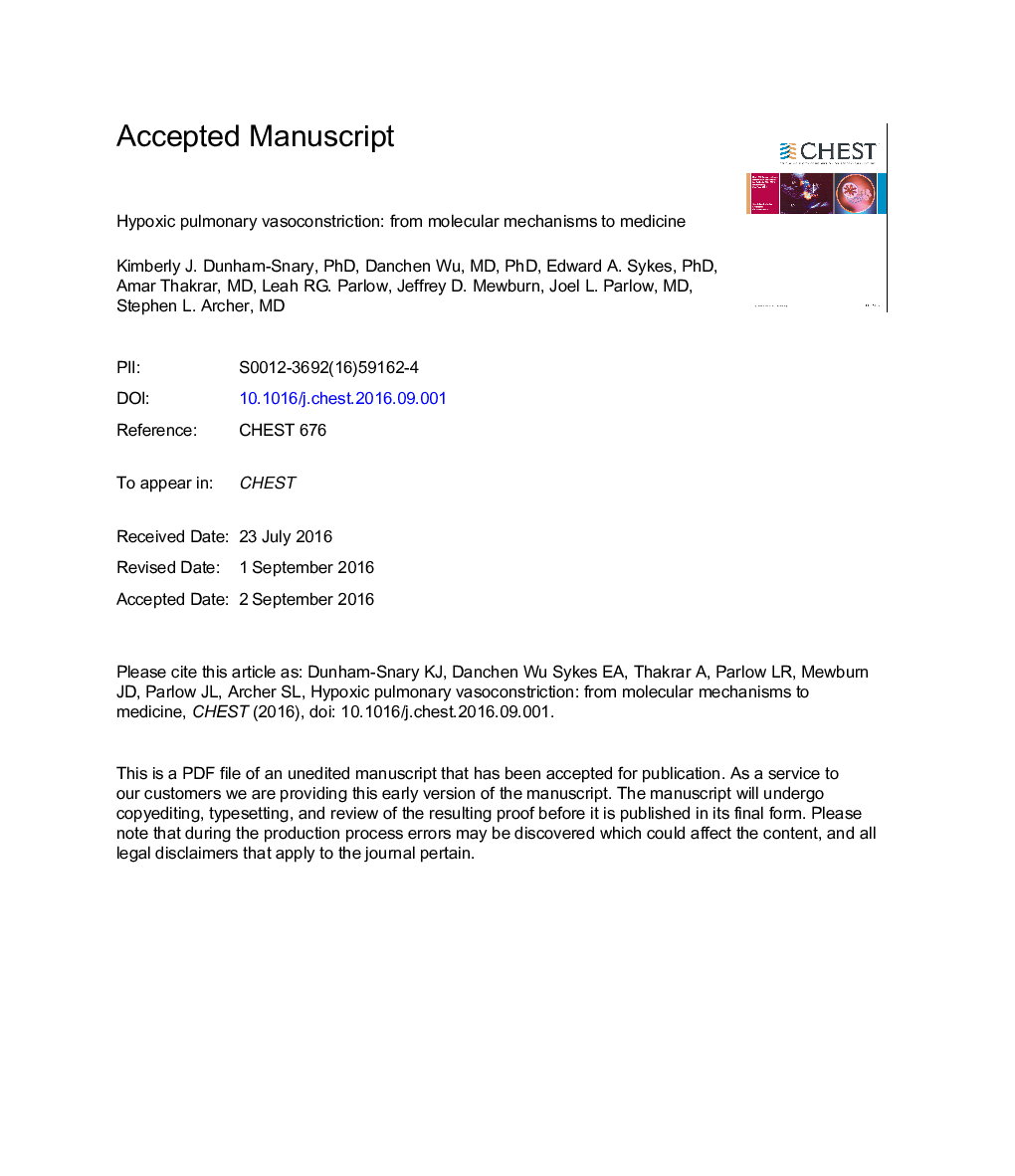| کد مقاله | کد نشریه | سال انتشار | مقاله انگلیسی | نسخه تمام متن |
|---|---|---|---|---|
| 5601059 | 1405308 | 2017 | 38 صفحه PDF | دانلود رایگان |
عنوان انگلیسی مقاله ISI
Hypoxic Pulmonary Vasoconstriction
ترجمه فارسی عنوان
عصب ریوی عضلانی
دانلود مقاله + سفارش ترجمه
دانلود مقاله ISI انگلیسی
رایگان برای ایرانیان
کلمات کلیدی
HIFPAPSOD2mPAPPASMCChuvash polycythemiaflavin adenine dinucleotideHAPEHPHFADH2ROS - ROSAdenosine Triphosphate - آدنوزین تری فسفاتATP - آدنوزین تری فسفات یا ATPHigh altitude pulmonary edema - ادم ریوی ارتفاع بالاhigh-altitude pulmonary edema - ادم ریوی بالا در ارتفاعventilation/perfusion - تهویه / پرفیوژنelectron transport chain - زنجیره انتقال الکترونPulmonary artery smooth muscle cell - سلول عضله صحی عروق ریویSuperoxide dismutase 2 - سوکسوکس دیسموتاز 2Pulmonary artery - شریان ریویHypoxia-inducible factor - فاکتور القاء کننده هیپوکسیPulmonary artery pressure - فشار شریان ریویmean pulmonary artery pressure - فشار متوسط شریانی ریویMitochondria - میتوکندریاNADH - نادانNitric oxide - نیتریک اکسیدNAD, nicotinamide adenine dinucleotide - نیکوتینامید آدنین دینوکلئوتیدETc - و غیرهhypoxic pulmonary vasoconstriction - واژن تنفسی ریوی هیپوکسیکHPV - ویروس پایپلوم انسانیPulmonary hypertension - پرفشاری خون ریویHypoxic pulmonary hypertension - پرفشاری خون ریوی هیپوکسیcal - کالVoltage-gated potassium channels - کانال های پتاسیم ولتاژvoltage-gated calcium channels - کانال های کلسیم با ولتاژReactive oxygen species - گونههای فعال اکسیژن
موضوعات مرتبط
علوم پزشکی و سلامت
پزشکی و دندانپزشکی
کاردیولوژی و پزشکی قلب و عروق
چکیده انگلیسی
Hypoxic pulmonary vasoconstriction (HPV) is a homeostatic mechanism that is intrinsic to the pulmonary vasculature. Intrapulmonary arteries constrict in response to alveolar hypoxia, diverting blood to better-oxygenated lung segments, thereby optimizing ventilation/perfusion matching and systemic oxygen delivery. In response to alveolar hypoxia, a mitochondrial sensor dynamically changes reactive oxygen species and redox couples in pulmonary artery smooth muscle cells (PASMC). This inhibits potassium channels, depolarizes PASMC, activates voltage-gated calcium channels, and increases cytosolic calcium, causing vasoconstriction. Sustained hypoxia activates rho kinase, reinforcing vasoconstriction, and hypoxia-inducible factor (HIF)-1α, leading to adverse pulmonary vascular remodeling and pulmonary hypertension (PH). In the nonventilated fetal lung, HPV diverts blood to the systemic vasculature. After birth, HPV commonly occurs as a localized homeostatic response to focal pneumonia or atelectasis, which optimizes systemic Po2 without altering pulmonary artery pressure (PAP). In single-lung anesthesia, HPV reduces blood flow to the nonventilated lung, thereby facilitating thoracic surgery. At altitude, global hypoxia causes diffuse HPV, increases PAP, and initiates PH. Exaggerated or heterogeneous HPV contributes to high-altitude pulmonary edema. Conversely, impaired HPV, whether due to disease (eg, COPD, sepsis) or vasodilator drugs, promotes systemic hypoxemia. Genetic and epigenetic abnormalities of this oxygen-sensing pathway can trigger normoxic activation of HIF-1α and can promote abnormal metabolism and cell proliferation. The resulting pseudohypoxic state underlies the Warburg metabolic shift and contributes to the neoplasia-like phenotype of PH. HPV and oxygen sensing are important in human health and disease.
ناشر
Database: Elsevier - ScienceDirect (ساینس دایرکت)
Journal: Chest - Volume 151, Issue 1, January 2017, Pages 181-192
Journal: Chest - Volume 151, Issue 1, January 2017, Pages 181-192
نویسندگان
Kimberly J. PhD, Danchen MD, PhD, Edward A. PhD, Amar MD, Leah R.G. Parlow, Jeffrey D. Mewburn, Joel L. MD, Stephen L. MD,
